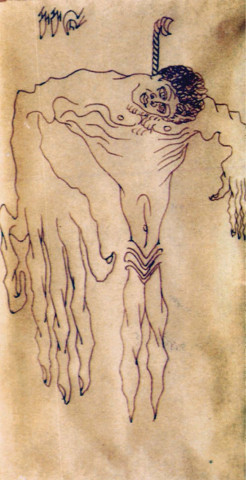
The level of dust pollution on The Mall is ten times the recommended maximum for air quality in museums, greatly accelerating the damage done to centuries old artefacts stored at the Lahore Museum, The Express Tribune has learnt.
The museum installed an air sampler, borrowed from the Institute of Environment Technology of the University of Engineering and Technology, just above the main entrance in January. It measures the concentration of particulate matter (of size below 20 microns) in the air and collects the pollutants in a filter that can then be analysed in a lab. The idea is to find out what types of particulate matter are in the air and how they affect the artefacts at the museum as well as the historic building. The study is to be completed at the end of this year.
Conservation officer Hafiz Abdul Azeem takes daily readings of the sampler. “The average reading is about 500 ppm [parts per million], which is ten times the international standard for air quality for storing artefacts,” he said.
The residue collected from the filter likely contains both organic and inorganic components that damage objects, he said. Even if harmful compounds are not present, the dust accelerates the growth of microbes when it settles on the surfaces of artefacts made of organic matter like paper, wood, ivory and leather. Paintings, manuscripts and murals contain both organic and inorganic materials.
The sampler does not measure the concentration of nitrogen and sulphur oxides, ozone and carbon monoxide in the air, all of which can also damage artefacts and have been measured in high concentrations in the air in Lahore.
Since April 2010, a thermo hydrometer has also been used to take five daily readings of humidity and temperature in each of the museum’s 22 galleries.
High temperature and humidity also accelerate the deterioration of artefacts, and both these readings are also high at the museum during the monsoon and summer.
Azeem said that paintings and murals, such as the crumbling ceiling masterpiece by Sadequain, were most vulnerable to damage from oxides of sulphur and nitrogen. High humidity encourages these oxides to combine with moisture in the air to form sulphuric or nitric acid in the form of small droplets on the surface of paintings, causing fast erosion.
Central air-conditioning with filters to remove the pollutants can be used to control the air quality and conditions inside the museum, but Azeem said this was impracticable because of the high cost of installing such a system in an old building like the Lahore Museum. He said that museum officials had long sought air-conditioning but never been provided the funds.
The conservation officer said that he was conducting experiments on air ventilation at the museum in the hopes of designing a low cost system that would help control air currents indoors, which could lengthen the life of some artefacts.
The damage done to the building and its treasures by air pollution from traffic can be mitigated by forcing motor vehicles to install catalytic converters. “It extracts the hydrocarbons from car emissions and releases a harmless gas,” Azeem ssaid.
The Antiquity Act of 1975 calls for research to preserve artefacts and historical buildings. However, this is the first environment-oriented research focusing on artefact preservation in Pakistan, said Azeem.
Neither the Antiquity Act of 1975 nor the Pakistan Environment Protection Act specify air quality standards for museums or historical buildings in the country.
Published in The Express Tribune, June 13th, 2011.


















COMMENTS
Comments are moderated and generally will be posted if they are on-topic and not abusive.
For more information, please see our Comments FAQ